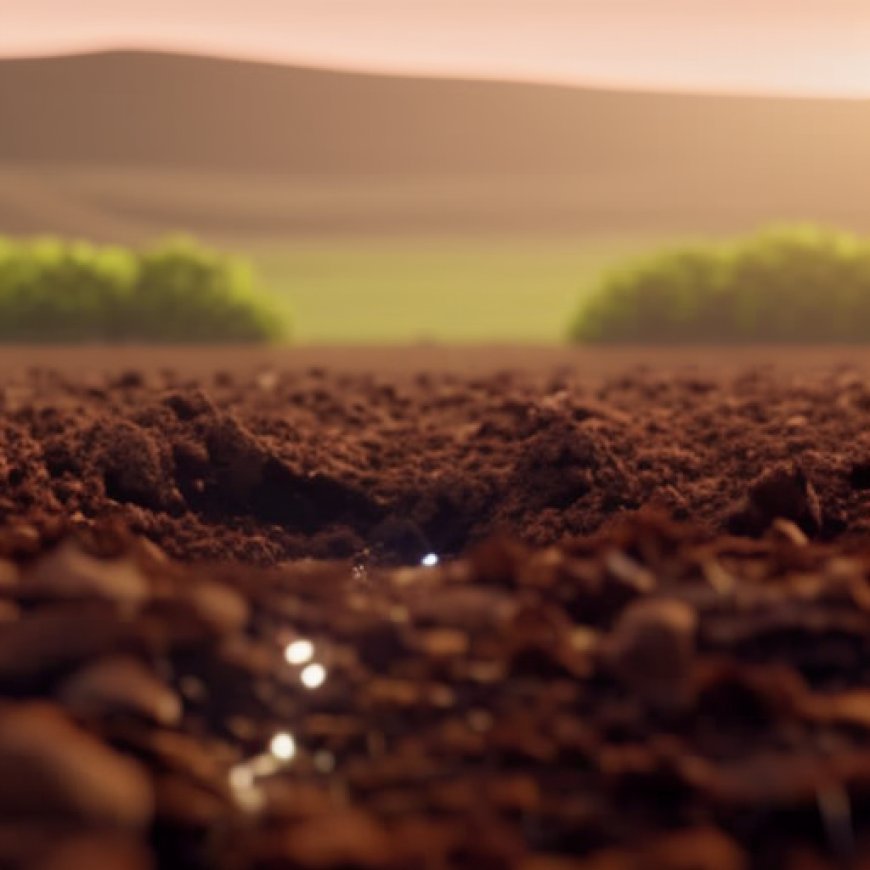Soil footprint: Measuring soil degradation caused by farming


The Importance of the Soil Footprint in Sustainable Farming

The concept of the “soil footprint” is gaining recognition as a crucial factor in sustainable farming practices, as it measures the impact of agriculture on soil erosion. With the global population continuously increasing, the challenge of feeding everyone while preserving essential natural resources becomes more urgent. While carbon and water footprints have received significant attention, the soil footprint addresses the often-overlooked issue of soil degradation.
Defining the Soil Footprint
Scientists Andrés Peñuela, Vanesa García Gamero, and Tom Vanwalleghem at the University of Córdoba have played a vital role in defining and applying the concept of the soil footprint in Spain. This is particularly relevant in Spain, where soil erosion poses a critical challenge to agricultural sustainability.
The Significance of Healthy Soil
Healthy soil serves as the foundation for productive ecosystems, ensuring food security, biodiversity, and climate resilience. The soil footprint quantifies the amount of soil lost during cultivation, providing a clear metric for evaluating agricultural practices. A larger soil footprint indicates significant soil erosion, which can result in devastating losses of essential nutrients, biodiversity, and the soil’s water retention capacity.
Publication and Further Reading
The study on the soil footprint is published in the journal “Soil Security.” For more information and to read the original post, please visit here.
SDGs, Targets, and Indicators
1. Which SDGs are addressed or connected to the issues highlighted in the article?
- SDG 2: Zero Hunger
- SDG 3: Good Health and Well-being
- SDG 6: Clean Water and Sanitation
- SDG 13: Climate Action
- SDG 15: Life on Land
The article discusses the importance of sustainable farming and its impact on soil erosion. This is directly connected to SDG 2, which aims to achieve zero hunger by promoting sustainable agriculture. Additionally, healthy soil is crucial for biodiversity and climate resilience, aligning with SDG 15 (Life on Land) and SDG 13 (Climate Action). Furthermore, soil degradation can affect water quality, linking it to SDG 6 (Clean Water and Sanitation). Lastly, the article indirectly connects to SDG 3 (Good Health and Well-being) as soil erosion can impact food security and nutrition.
2. What specific targets under those SDGs can be identified based on the article’s content?
- SDG 2.4: By 2030, ensure sustainable food production systems and implement resilient agricultural practices that increase productivity and production, that help maintain ecosystems, that strengthen capacity for adaptation to climate change, extreme weather, drought, flooding, and other disasters, and that progressively improve land and soil quality.
- SDG 15.3: By 2030, combat desertification, restore degraded land and soil, including land affected by desertification, drought, and floods, and strive to achieve a land degradation-neutral world.
Based on the article’s content, the targets that can be identified are SDG 2.4, which focuses on implementing resilient agricultural practices and improving land and soil quality, and SDG 15.3, which aims to combat desertification and restore degraded land and soil.
3. Are there any indicators mentioned or implied in the article that can be used to measure progress towards the identified targets?
The article mentions the concept of the “soil footprint” as a metric for evaluating agricultural practices and quantifying the amount of soil lost during cultivation. This can be considered an indicator to measure progress towards the targets of SDG 2.4 and SDG 15.3.
SDGs, Targets, and Indicators
| SDGs | Targets | Indicators |
|---|---|---|
| SDG 2: Zero Hunger | 2.4: By 2030, ensure sustainable food production systems and implement resilient agricultural practices that increase productivity and production, that help maintain ecosystems, that strengthen capacity for adaptation to climate change, extreme weather, drought, flooding, and other disasters, and that progressively improve land and soil quality. | “Soil footprint” – quantifying the amount of soil lost during cultivation to evaluate agricultural practices. |
| SDG 15: Life on Land | 15.3: By 2030, combat desertification, restore degraded land and soil, including land affected by desertification, drought, and floods, and strive to achieve a land degradation-neutral world. | “Soil footprint” – quantifying the amount of soil lost during cultivation to evaluate land and soil quality. |
Source: geneticliteracyproject.org








